If you’re looking for a unique area to scuba dive away from the main oceans, you should consider Bocas del Toro as a top contender!
Where is Bocas del Toro?
The archipelago (our main focus for this article) is located on the northwestern Caribbean side of Panama, near Costa Rica.
How to Visit
The two main ways of reaching Bocas del Toro are via air or land and sea.
Alternatively, you can travel from Panama City (Albrook bus terminal) to Almirante via bus. After arrival, you’ll need to take a boat to arrive at Bocas Town (there’s also a ferry service twice a day).
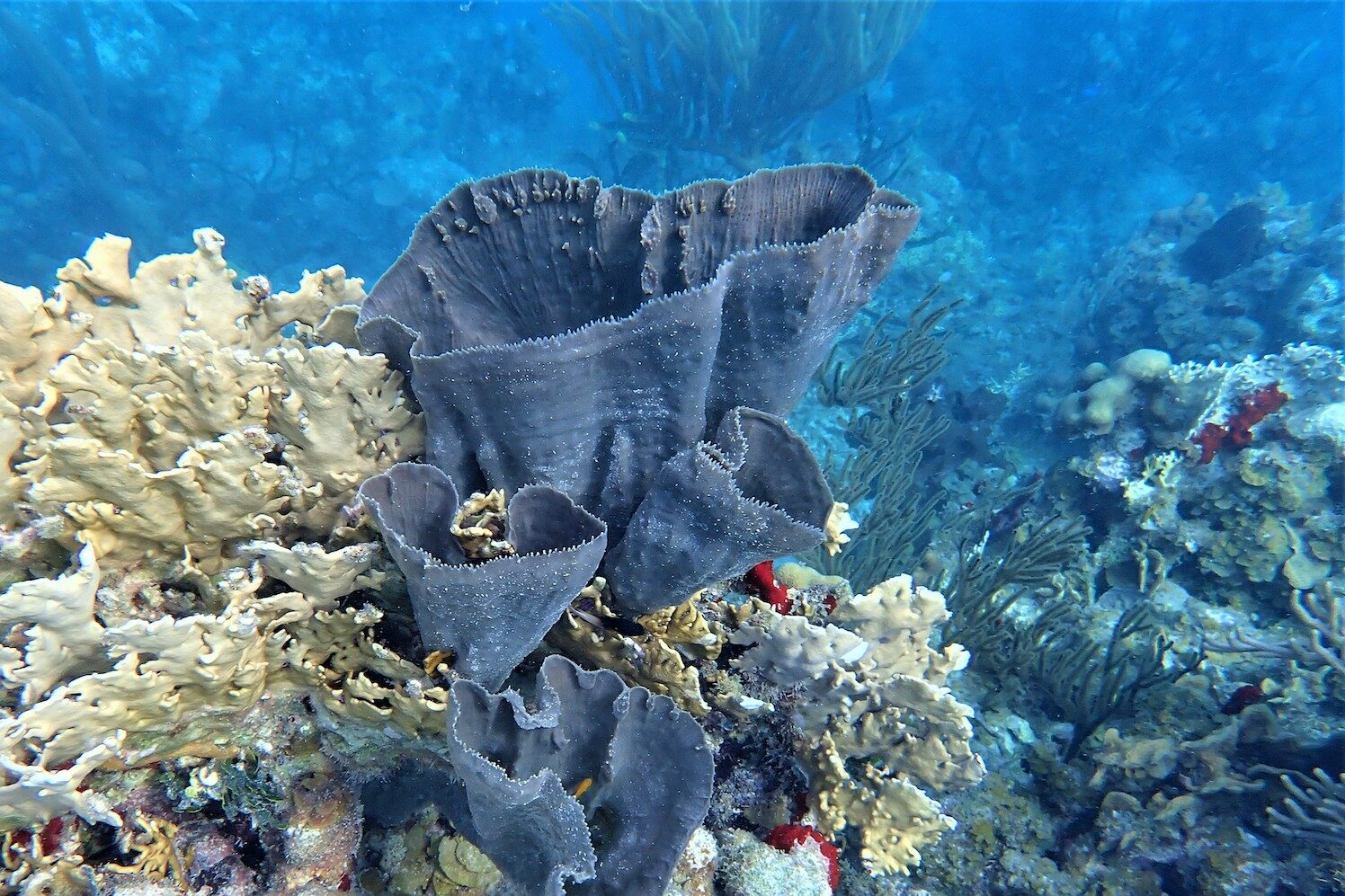
When to Visit
The best time to visit Bocas del Toro is during its “mini-dry” season, from September to October.
While the waters there are around 28 degrees Celsius year-round, the currents are most calm during its mini-dry season.
You may also want to visit between February to April to see squids.
The Underwater World of Bocas del Toro
Here, we’ll look at the various types of marine life you may discover in your next scuba adventure.
Coral Reef Ecosystems
Of the many types of corals and marine life to be discovered, these are the ones most likely to catch your eye:
Elkhorn Coral
Elkhorn coral helped build many of the coral reefs. It can form groups called “thickets” in shallow water, providing shelter for many reef animals including fish.
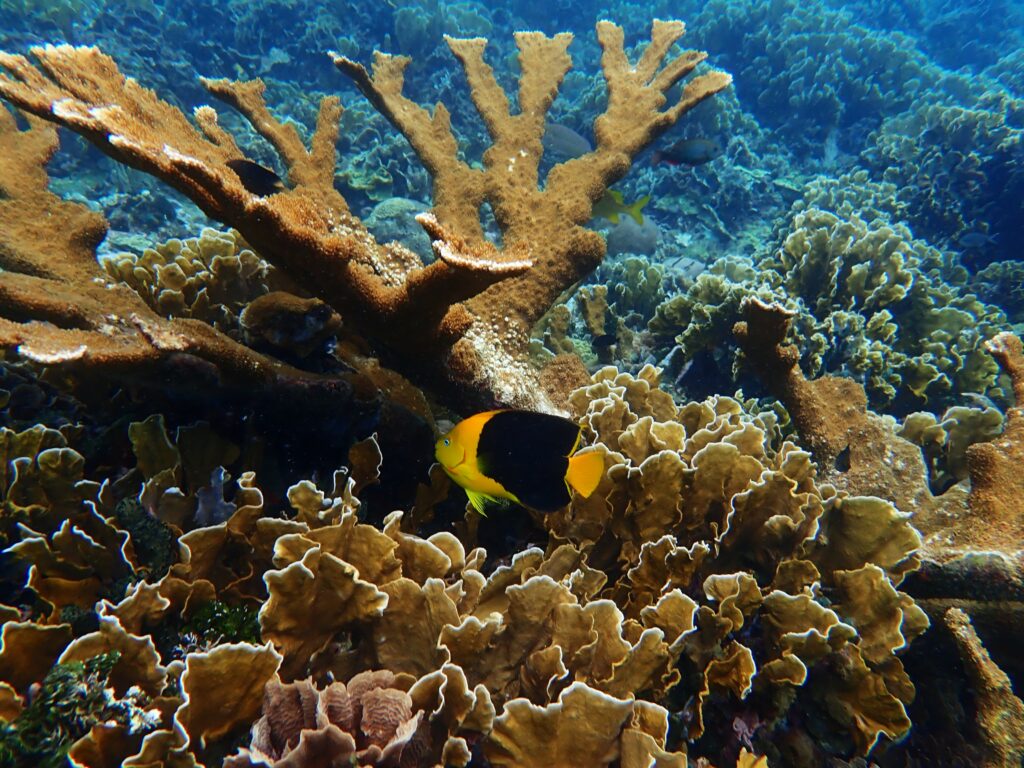

Great Star Coral
Another type of reef-building coral, the Great Star Coral forms huge boulder- and dome-like structures up to 5 feet in diameter in shallow and moderate waters. It becomes flattened deeper down.
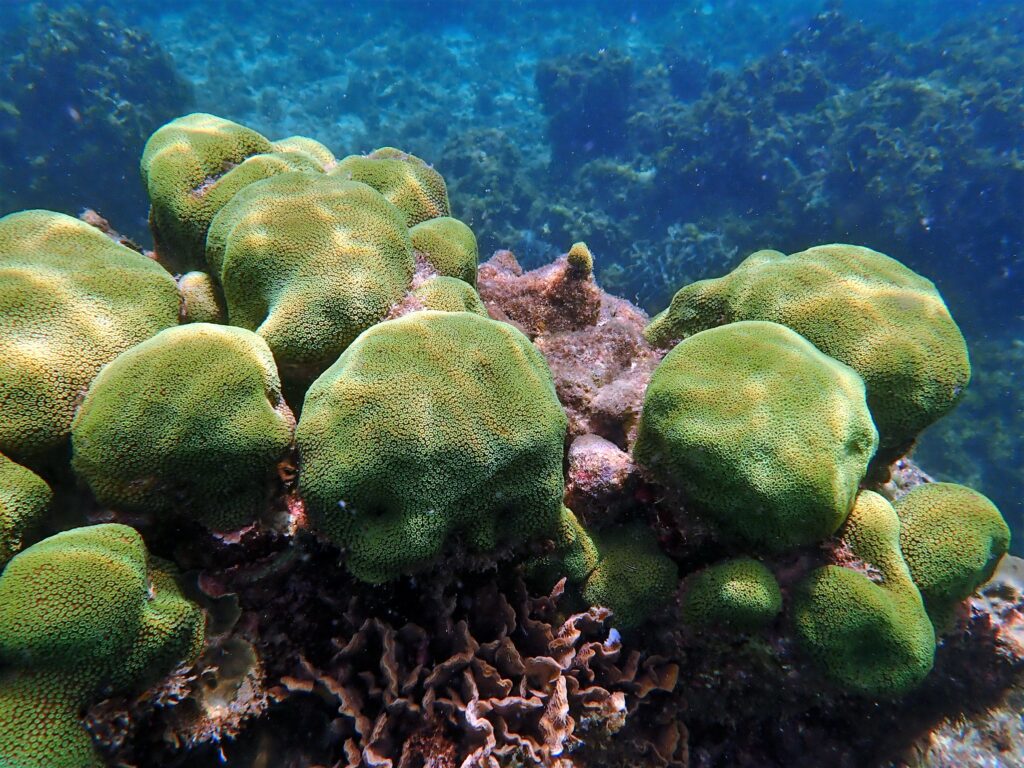
Sea Fans
Found in shallow waters, sea fans are composed of numerous polyps that grow together into a fan-like pattern. There’s a variety of colors, and the polyps can spread their tentacles into a plankton-catching net.
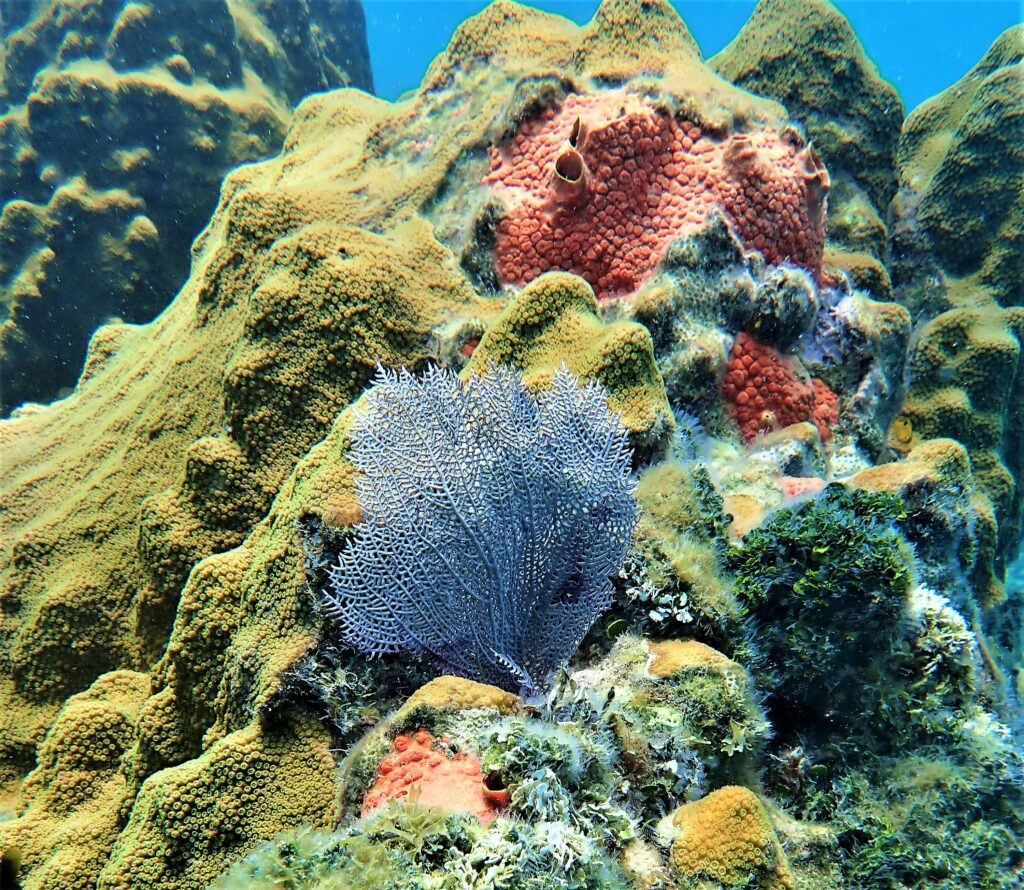
Angelfish
Angelfish are relatively large (up to 30 cm in length) fish that have a wide array of colors and patterns that can change as they age. They can be either solitary or form pairs or groups. Their eggs are released into the water.
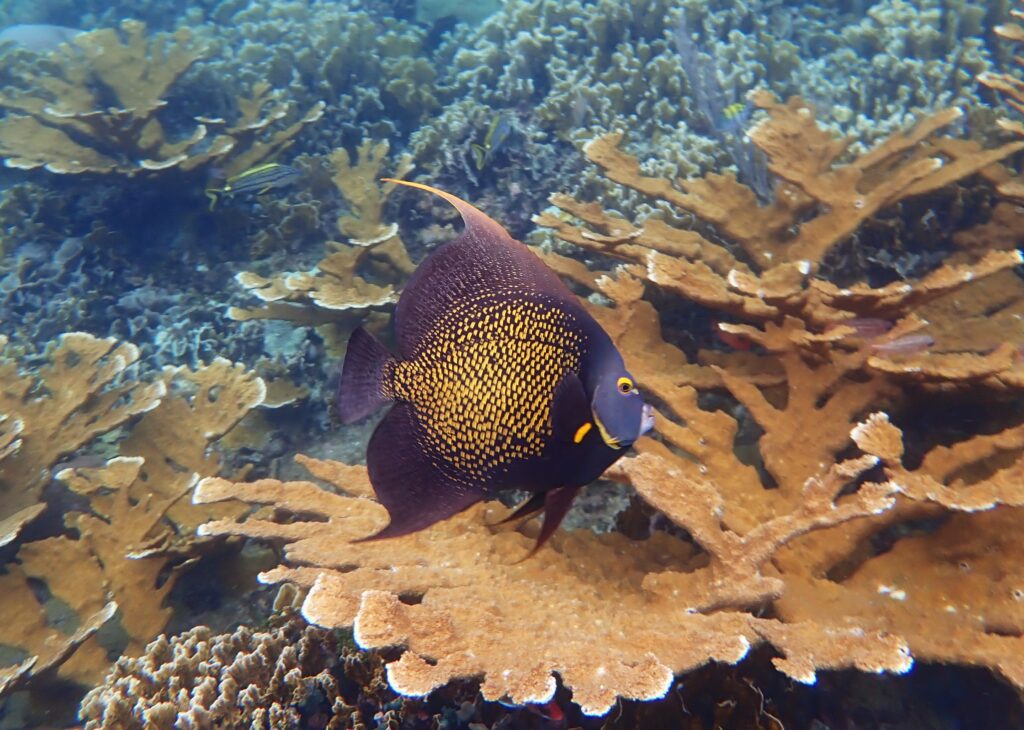
Parrotfish
Parrotfish spend up to 90% of their days scrapping algae off corals and rocks. This helps maintain balance within the reefs by ridding reefs of their competitors (for space and light) and allowing baby coral room to grow.
Sea Stars
Sea stars are echinoderms with (typically) 5 arms found in all the world’s oceans. Common species found in the Caribbean include Cushion, Banded, and Two-Spined sea stars.
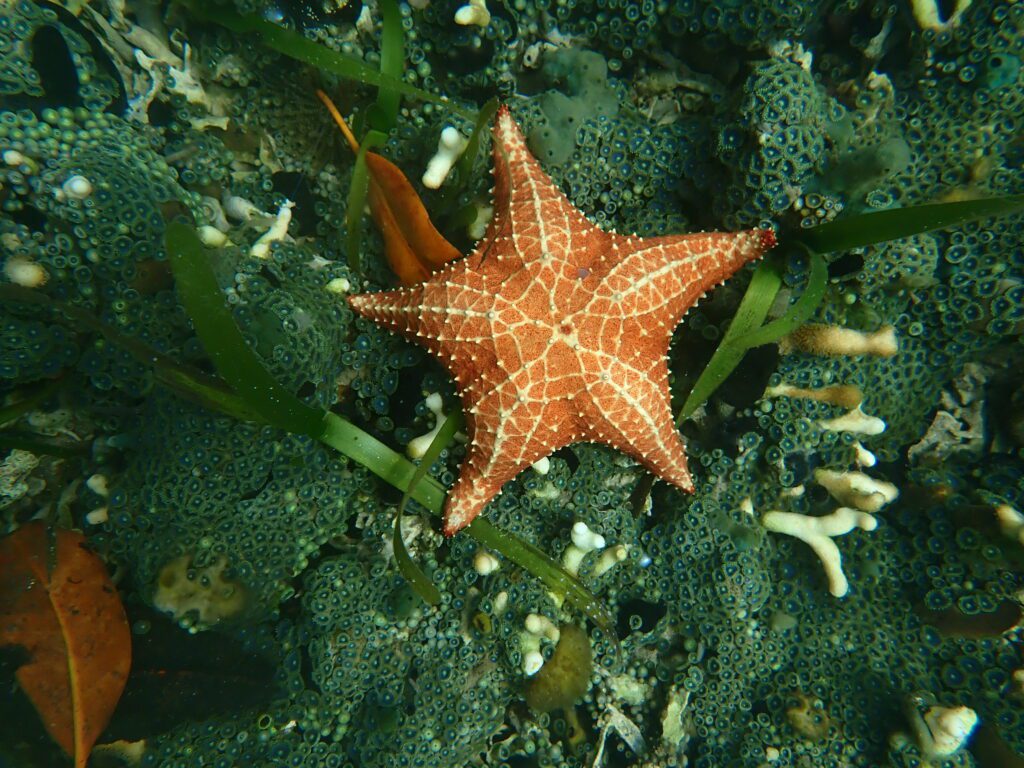
Blunt-Spined Brittle Star
The blunt-spined brittle star is a large brittle star that is black or dark brown with two spines along the first arm segments, with two tentacle scales. They move laterally and usually hide in caves.
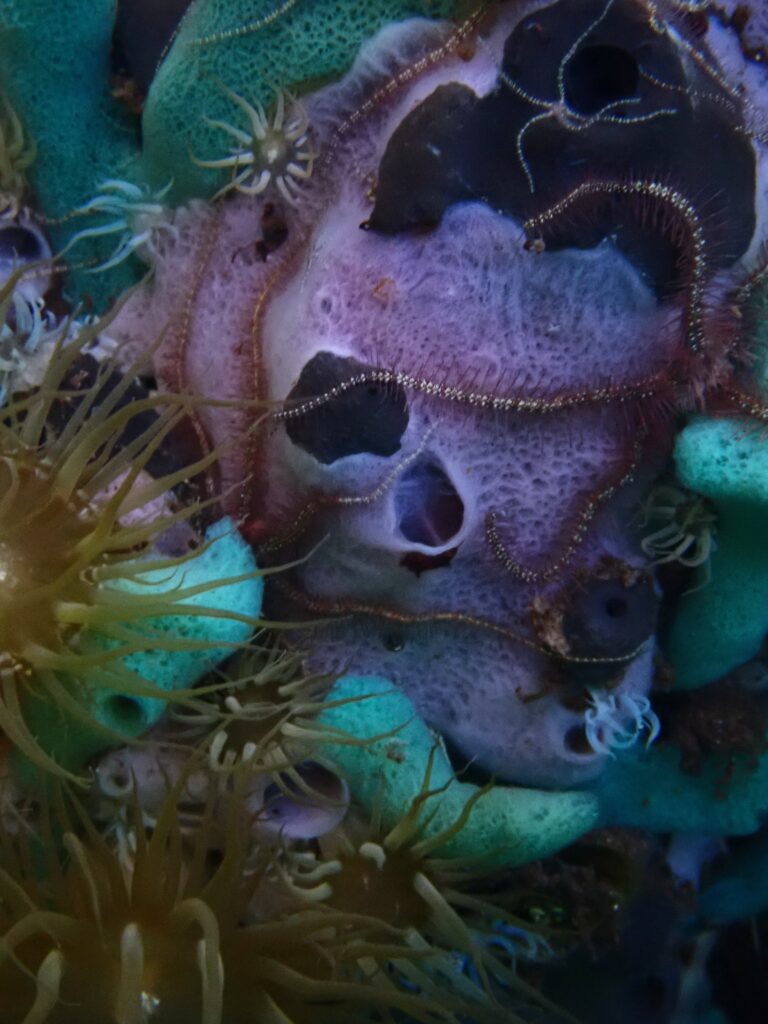
Don’t miss the Bocas Del Toro Photo Gallery to see more beautiful images of corals and tropical fish. Special thanks to Barry Sessions for letting us showcase his remarkable underwater photography.
The Importance of Mangrove Forests
Mangroves are crucial for reef health as they help stabilize shorelines, filter out pollutants, enhance the nutrient cycles and energy flow, and act as nurseries for various fish species.
Invertebrates commonly found in mangrove forests include sponges, scallops, oysters, and some seahorses. Larger animals include crabs, snails, American crocodiles, night herons, and egrets.
Safety in Bocas del Toro
Bocas del Toro has a very low violent crime rate. Here are some tips on staying safe:
- Leave valuables at home
- Keep things close to you outside
- Try not to go out alone, especially to remote areas at night
- Lock all windows and doors when you leave
Theft is the most common crime seen in the area, so follow these tips to minimize risk.
In terms of health risks, be sure to follow these tips:
- Keep yourself protected from the sun, bug bites, and infections (by disinfecting your cuts/scrapes)
- Don’t overdrink on alcohol
- Pay attention to warning signs at the beaches and avoid boat lanes to avoid injury in the water
Best Dive Operators in Bocas del Toro
- Panama Dive School: Specializes in personal dive experiences, recommended for small groups
- La Buga Dive & Surf: Convenient location in Bocas Town, great for large groups
- Bocas Dive Center: Very modern, with the largest dive boat amongst the operators, perfect for small groups
Diving/Traveling in Bocas del Toro
Average costs include:
- Fun Dives (for certified divers): $80/person for 2 dives
- Discover Scuba Dive (non-certified divers): $100/person/2 dives
- PADI Open Water Course (become certified): $340/person/4 dives/3 days
- Seasonal Dive Trips (for further dive areas): $100-$140/person/2 dives
- Night Dives (after 6:30 pm): $60/person/1 dive
Traveling Economically
The flight from Albrook Gelabert Airport to Bocas del Toro International Airport costs roughly $130.
A cheaper option would be traveling via bus from Panama City (Albrook bus terminal) to Almirante for about $28. The subsequent boat will cost you $10, while the ferry costs $1 per trip.
Diving Spots
Some popular scuba diving spots include:
Mayday
Mayday is a plane wreck diving site beside Bocas Dive Center.
Besides the wreck itself, there’s a variety of marine life you can see, such as surgeonfish, angelfish, and butterflyfish.
Casa Blanca
Coral reefs, sponges, and a shallow sandy substrate are all found here. Sponges range widely by color and shape. Butterflyfish, pufferfish, and barracudas are common here.
Loro Verde
Star Brittles line the Loro Verde reef. Other notable finds include sponges of various shapes, groups of squids, and stingrays.
Conservation Efforts
A combination of sustainable tourism and education efforts is used in Bocas del Toro. Indigenous communities provide tours and eco-friendly meals to demonstrate to tourists the importance of protecting the environment.
The usage of eco-friendly dive operators, reef-safe sunscreens, and the practice of avoiding contact with marine life are important to the protection of coral reefs.
FAQs
1. Is Bocas del Toro safe?
Bocas del Toro is considered very safe for tourists, with theft being the most common crime.
2. Is Bocas del Toro expensive?
Bocas del Toro is not considered expensive based on the travel and diving costs.
Conclusion
Bocas del Toro is home to a wide array of marine life, attracting divers from around the world. With the right mindset and practice of eco-friendly diving, you can help preserve the ecosystems there for years to come.